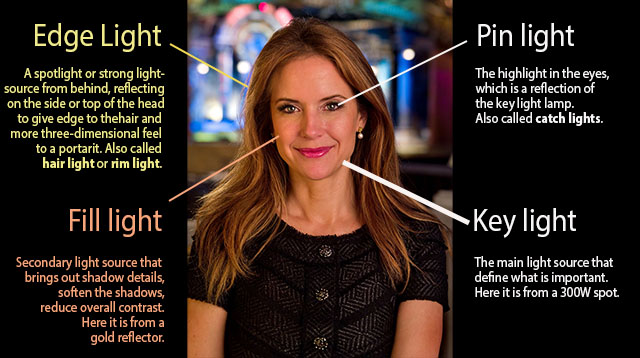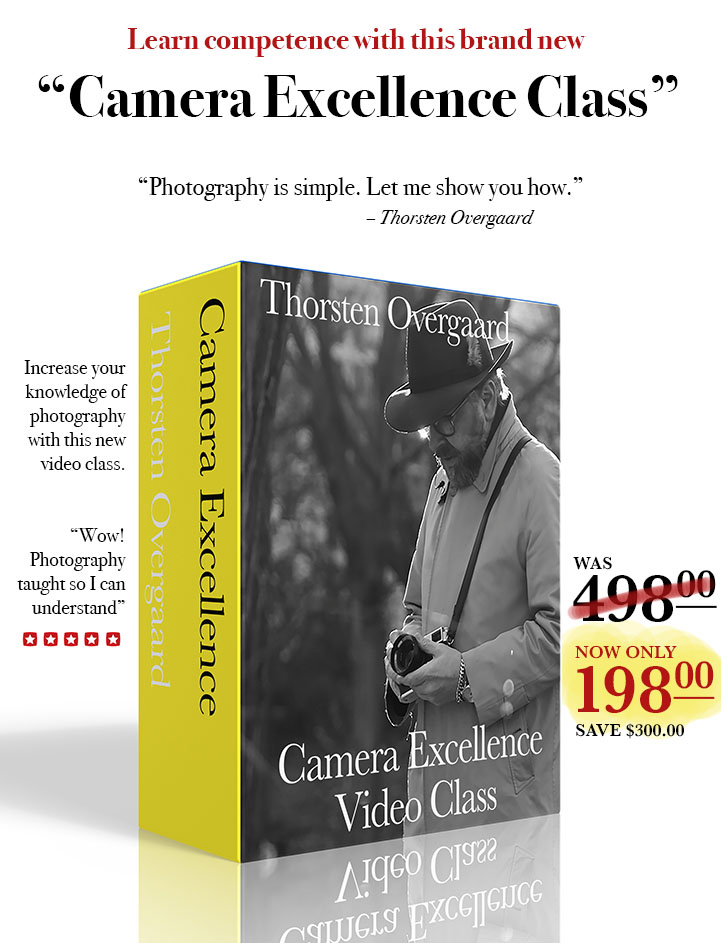How to get correct colors in digital color photography
By: Thorsten Overgaard. January 3, 2024.
A Gray Card traditionally is used to set the exposure correctly, but the Kodak R-27 can be used for exposure precision and color accuracy (white balance).
If you walked into a camera store and asked for a "white balance card", they would often give you a gray card. Which is not for white balance, but for exposure. The point in a white balancing card as the WhiBal is that it is color neutral and "calibrates" the colors to be natural.
But now, with the new Kodak R-27 Gray Card, Kodak has developed a new surface with MunSell Color Services Lab of X-Rite that can be used for both exposure and white balance. In other words, this gray card is color neutral and will calibrate the colors.
Colors are a key component in aesthetics
No matter the subject, when the colors are correct, the clarity goes up, and any subject looks beautiful. Conversely, even a beautiful subject can be made ugly when the colors are off.
When a face is in a photo, the skin should be the exact color of the person's skin. When any other subject such as a table, a flower, a wall, etc. is in the photo as the main subject, it should look correct.
Also, notice in the examples below, the clarity and the sense of space. When the colors are off, the objects seem to lose their shape and become flat.

Correct balanced colors |
|

Wrong colors |
| |
|
|

Correct balanced colors (5900 Kelvin) |
|

Wrong colors (3900 Kelvin) |
| |
|
|

Correct balanced colors |
|

Too cold balanced colors |
| |
|
|

Too warm balanced colors |
|

Extremely cold balanced colors |
Using a reference card for Color fidelity - it is as easy as this
1) Include the Kodak Gray Card R-27 (or the WhiBal card) in the scene by positioning it in front of the main subject so that it will be illuminated by the same light as the main subject. Take an additional photo of this, before or after you take the actual photos, for later reference:
| |

The Picker is used to point to the Gray Card or WhiBal card in the photo, then the Temperature and Tint is calibrated to the actual light of the scene 0 and the colors will be clean. Temperature is adjustment of warm/cold, and Tint is adjustment of magenta/green |
| |
|
2) Once you have imported the photos to the computer, choose the color picker in Lightroom or Capture One and click on the gray card in the reference photo. This will calibrate both Kelvin (temperature) as well as Tint (magenta/green balance), and also often balance purple cast, orange cast, etc that may be characteristic for a specific digital sensor.
3) Copy the adjustments made to the reference photo and paste it onto the one, or a series of photos, taken under the same light conditions.
4) Now make individual adjustments as needed to exposure, shadow details, etc. Because the starting point is correct colors, it's much easier to make adjustments and artistic decisions.

Reference photoo |
|

Final adjusted photo |
| |
|
|
Exposure based on Kodak Gray Card R-27
The original use of a gray card was (and is) to include the gray card in a corner of a frame that can later be cropped out, so as to have it there for reference throughout exposure, development and print (or in motion film, for color grading). Obviously, when a printer can see a snippet of the gray card in the final print, he can tell if it is clean or needs adjustment. Or if he is intented to depart from the correct colors, he can fist adjust to correct, then depart in the direction decided.
| |

Hold the camera close to the Gray Card (that doesn't need to be in focus) and read from the camera, what the correct exposure is for the scene. |
| |
|
Other use is to point a spot lightmeter towards the card while it is held in front of the scene so that it will be illuminated by the same light as the main subject. You can also simply hold the card in front of the main subject and then point a modern camera with built-in (reflective) lightmeter towards it. This will tell what the correct exposure setting should be set to (manually).
The Gray Card is the de facto standard for correct exposure, and how it this?
Well, any camera light meter, no matter how advanced and modern it might be, is trying to make the scene the same middle gray as a Gray Card. The idea being that most scenes you photograph, when you mix all the object in the scene together, will make up a mix equivalent to the middle gray of a Gray Card!
As you can imagine, if you photograph a flower in front of a black wall, this will be over-exposed. Why is that? Because the light meter is trying to make the black wall the same middle gray as the Gray Card!
Likewise, if you photograph a snow landscape, the light meter will adjsut the exposure so as to make the white snow middle gray. By using a Gray Card to set the exposure, the snow will be white with a bit of texture visitble.
In both cases, if you hold the Gray Card in front of the black wall, or in front of the white snow, the exposure will be correct! All you have to do is see what the light meter says, then set the camera manually to that.
Adjust for the key light
Daylight/sunshine is 5400 Kelvin, shadow is 7300 Kelvin, and so on. Withon the same frame, the color temperature (Kelvin) may vary. So you set it for the key light (which is what there is the most of, or which is the dominating light, usually the brightest side of a face).

The difference between the key light and the reatively soft shade is 2000 Kelvin in this picture.

My portrait of Kelly Preston has edge light from a 150W spot placed outside the frame to the left behind her. The reflection in her eyes is pin light (catch light from the main light source, the key light, a 300W spot). The left side of her face is fill light from a gold reflecor reflecting the key light (two spotlights and a reflector was used for this photograph). © Thorsten Overgaard.
The WhiBal card is not a Gray Card
While the WhiBal card is clearly gray, it is not middle gray. It brighter (11% reflective whereas a real Gray Card is 18% reflective). The WhiBal card was never intented to be used for exposure. The only thing you can say abot the WhBal card is that is it neutral (and thus can be used to calibrate the colors, and it is the size of a credit card, so it's easy to fit in a pocket or wallet.
White paper, in theory, could also do the job
A white paper, a white wall, a white cup, etc can also work to adjust the overall colors. Only problem is that for example paper often have chemistry in it so it is more blue than neutral, and of course paper can often also be more yellow than neutral white. Same goes for wall, cups, furniture, etc. This is why a standardized "always neutral" card as the WhiBal or Kodak Gray Card R-27 is good to have around.
A gray MacBook, or a gray camera, as the Leica M11 in the photo above, can actually also often be used. And so can metal-gray street sign poles.
Most surprising, sometimes the white in a person's eyes can be used to balance the entire photo.
But all those "maybe this will work" solutions is to rely on luck and hope. If you want to get the colors right and thus get the maximum color fidelity, truth and clarity - simply always have a Kodak Gray Carad R-27 or a WhiBal card with you.
No, don't go get free color samles
Color samples from a do-it-yourself store look handy, and they are free. But if you look again, you will see that almost all gray color paint has a ting of blue or yellow to break them. Which may look great on a wall, but at the same time make them unusable for white balancing.
Artistic departure from the Gray Card
The exposure by Gray Card will always reult in "daylight" exposure, and you can easily imagine that a night scene perhaps should look darker. Hence, you have to under-expose so as to get that effect.
Likewise, while the Gray Card or WhiBal card will calibrate the colors to natural clean colors, you may prefer a warmer or colder look, perhaps even a green look for industrial atmosphere, or a red for intimate atmosphere, or a blue colder look for high-tech or futuristic look. The film grading is good to get inspiration from as they usually grade an entire film, or parts of it, for specific feel and impression.
But notice that the starting point is always finding the perfect exposure and colors - and then make a consius decision on how and why to depart from it.

Clean light (the movie Priscilla 2023) |
|

Warm and underexposed light (Priscilla 2023) |
| |
|
|
Where to buy the Kodak Gray Card R-27 and WhiBal card
The Kodak card is not widely available, I got mine from BH Photo where it sells for $69.00. They also have the WhiBal card in stock for $20.00, and so does Amazon and others.
I usually get a few of them so I have one handy always. The WhiBal card can be washed with soap and water if and when it gets dirty from being in a pocket. The Kodak Gray Card can be cut in smalle pieces so it is more handy.
More to come
Bon voyage with it all. Sign up for the newsletter to stay in the know. As always, feel free to email me with suggestions, questions and ideas. And hope to see you in a workshop one day soon.
| |
|
|
|
|
| |
 |
|
| |
|
|
|
|
| |
"Photography is simple"
Thorsten Overgaard is one of the best to explain in simple terms how cameras works, and how to get excellent results.
Be competent. Buy and study this easy-to-use video class that explains how to get focus right, what sharpness is, how to get the exposure and the colors right, and more ...
"Easy to apply, photography finally told so everyone can become an expert user"
Normal price $498.00
Explained by Thorsten Overgaard by using Leica Q2, Leica SL2, Leica M11, Leica M10 Monochrom, 35mm film cameras, Leica Digilux 2 and more. |
|
Thorsten Overgaard's
"Camera Excellence Class"
For Computer,
iPad, Apple TV and smartphone.
Normal price $498.00
Only $198.00

Save $300.00
USE CODE: "COXY66" ON CHECKOUT
Brand new. Order now. Instant Delivery.
100% satisfaction or money back.
More info
Item #1847-0323
Released April 2023
|
|
| |
|
|
|
|
![]()
